| |
 |
 |
 |
|
 |
 |
 |
 |
 |

|
 |
 |
|
|
|
 |
The Seashell's Inner Beauty
|
 |
| |
 There is more to mother-of-pearl than good looks. Also called nacre, the gleaming, white material is renowned in scientific circles for its strong, yet flexible, properties. Now researchers have developed a nanoscale, layered material that comes close to nacre's properties, including its iridescence. The ability to nanomanufacture artificial nacre may provide lightweight, rigid composites for aircraft parts, artificial bone and other applications. Reporting online in Nature Materials on May 25, Nicholas Kotov and his colleagues at Oklahoma State University and at Digital Instruments/Veeco describe their method for creating nacre-like material that consists of alternating layers of clay and a type of polymer called a polyelectrolyte. Kotov received a National Science Foundation CAREER Award to pursue the work. There is more to mother-of-pearl than good looks. Also called nacre, the gleaming, white material is renowned in scientific circles for its strong, yet flexible, properties. Now researchers have developed a nanoscale, layered material that comes close to nacre's properties, including its iridescence. The ability to nanomanufacture artificial nacre may provide lightweight, rigid composites for aircraft parts, artificial bone and other applications. Reporting online in Nature Materials on May 25, Nicholas Kotov and his colleagues at Oklahoma State University and at Digital Instruments/Veeco describe their method for creating nacre-like material that consists of alternating layers of clay and a type of polymer called a polyelectrolyte. Kotov received a National Science Foundation CAREER Award to pursue the work.
Image credit: Zhiyong Tang, Oklahoma State University; NSF
Read the full story. ... Posted
5/27/03
|
 |
Scientists Study
Climate Change at North Pole Environmental
Observatory
|
 |
| |
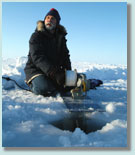 In recent years, scientists have observed a rapid thinning of the sea ice that covers the Arctic Ocean as well as shifts in ocean circulation. These changes appear to be caused by an alteration in the atmospheric circulation of the Northern Hemisphere—known as the Arctic Oscillation—which is roughly centered at the North Pole. The Arctic Ocean circulation and the flowing of waters from the Arctic into the Greenland Sea affect the deep overturning circulation of the Atlantic Ocean and play an important role in regulating the Earth's climate. To better understand these changes and their implications for global climate, the National Science Foundation is supporting a five-year, $3.9 million project, called the North Pole Environmental Observatory. In recent years, scientists have observed a rapid thinning of the sea ice that covers the Arctic Ocean as well as shifts in ocean circulation. These changes appear to be caused by an alteration in the atmospheric circulation of the Northern Hemisphere—known as the Arctic Oscillation—which is roughly centered at the North Pole. The Arctic Ocean circulation and the flowing of waters from the Arctic into the Greenland Sea affect the deep overturning circulation of the Atlantic Ocean and play an important role in regulating the Earth's climate. To better understand these changes and their implications for global climate, the National Science Foundation is supporting a five-year, $3.9 million project, called the North Pole Environmental Observatory.
Image credit: Peter West/NSF
Read the full story. ... Posted
5/23/03
|
 |
Fossil Record Accurately Reflects Recent Flowering of Marine Biodiversity
|
 |
| |
 The apparent increase in marine biodiversity over the past 50 million to 100 million years is real and not just a false reading produced by the inconsistencies of the fossil record, says a team of paleontologists led by the University of Chicago's David Jablonski. This finding, published in the May 16 issue of the journal Science, may help scientists place the future of global biodiversity in its proper context. "If you want to understand what's going to come in the future you need to understand the dynamics that led up to the biodiversity we see now," said Jablonski. Added H. Richard Lane, director of the National Science Foundation's paleontology program, which funded the research: "The results of this exciting study show how a thorough understanding of deep-time biotas and diversity places modern life into the correct perspective and provides a predictive capability for the future." The apparent increase in marine biodiversity over the past 50 million to 100 million years is real and not just a false reading produced by the inconsistencies of the fossil record, says a team of paleontologists led by the University of Chicago's David Jablonski. This finding, published in the May 16 issue of the journal Science, may help scientists place the future of global biodiversity in its proper context. "If you want to understand what's going to come in the future you need to understand the dynamics that led up to the biodiversity we see now," said Jablonski. Added H. Richard Lane, director of the National Science Foundation's paleontology program, which funded the research: "The results of this exciting study show how a thorough understanding of deep-time biotas and diversity places modern life into the correct perspective and provides a predictive capability for the future."
Image credit: USDA Photo/Ken Hammond
Read the full story. ... Posted
5/15/03
|
 |
From Cell-Cycle Secrets to NSF's Waterman Award Amon Earns Top Honor for Young Scientists
|
 |
| |
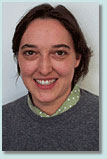 Angelika Amon, a cancer researcher caught up in the cell cycle, will receive the NSF's highest honor for young scientists and engineers at a May 21 ceremony in Washington, D.C. Amon explores how chromosomes--which carry an organism's genes in organized arrays--are duplicated and partitioned prior to cell division. For this and similar research, she will receive NSF's Alan T. Waterman Award. Established in 1975 and named for NSF's first director, the annual award honors an outstanding young scientist with a medal and a $500,000 grant to continue his or her scientific pursuits. Amon is the fourth woman to receive the Waterman Award and the third recipient from MIT. Angelika Amon, a cancer researcher caught up in the cell cycle, will receive the NSF's highest honor for young scientists and engineers at a May 21 ceremony in Washington, D.C. Amon explores how chromosomes--which carry an organism's genes in organized arrays--are duplicated and partitioned prior to cell division. For this and similar research, she will receive NSF's Alan T. Waterman Award. Established in 1975 and named for NSF's first director, the annual award honors an outstanding young scientist with a medal and a $500,000 grant to continue his or her scientific pursuits. Amon is the fourth woman to receive the Waterman Award and the third recipient from MIT.
Image credit: Howard Hughes Medical Institute
Read the full story. ... Posted
5/15/03
|
 |
Hurricanes at the Equator: "Impossible Perfect Storm" Observed
|
 |
| |
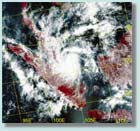 Hurricanes cannot form near the equator, or so meteorology textbooks maintain. But a storm named Typhoon Vamei upended scientists' thinking when it swirled above the equator in the South China Sea near Singapore on December 27, 2001. It formed so close to the equator that its winds howled in both hemispheres. New research funded by the National Science Foundation and the U.S. Navy's Office of Naval Research reveals the unusual mechanism for the birth of such a storm. Hurricanes cannot form near the equator, or so meteorology textbooks maintain. But a storm named Typhoon Vamei upended scientists' thinking when it swirled above the equator in the South China Sea near Singapore on December 27, 2001. It formed so close to the equator that its winds howled in both hemispheres. New research funded by the National Science Foundation and the U.S. Navy's Office of Naval Research reveals the unusual mechanism for the birth of such a storm.
Image credit: CRISP/National University of Singapore
Read the full story. ... Posted
5/13/03
|
 |
A Former Astronaut, a Radio Show, and a Science Writing Group Earn National Science Board's Annual Public Service Award
|
 |
| |
 The National Science Board (NSB) on May 12 announced former astronaut Kathryn D. Sullivan, radio show "Earth & Sky," and the Council for the Advancement of Science Writing as the selections for the 2003 NSB Public Service Awards. The awards honor those persons and organizations selected by the board as the year's top advocates of public understanding of science and engineering. Sullivan is president and chief executive officer of Columbus, Ohio's Center of Science and Industry, one of the nation's foremost private science education outreach organizations. "Earth & Sky" and the Council for the Advancement of Science Writing were named for the board's group award. The National Science Board (NSB) on May 12 announced former astronaut Kathryn D. Sullivan, radio show "Earth & Sky," and the Council for the Advancement of Science Writing as the selections for the 2003 NSB Public Service Awards. The awards honor those persons and organizations selected by the board as the year's top advocates of public understanding of science and engineering. Sullivan is president and chief executive officer of Columbus, Ohio's Center of Science and Industry, one of the nation's foremost private science education outreach organizations. "Earth & Sky" and the Council for the Advancement of Science Writing were named for the board's group award.
Read the full story. ... Posted
5/13/03
|
 |
Pattern Recognition Method Zeroes in on Genes that Regulate Cell's Genetic Machinery
|
 |
| |
 Using a new technique for recognizing patterns in biological databases, a team of U.S. and Israeli computer scientists and geneticists has developed a practical computational method that zeroes in on the genes responsible for controlling the genetic machinery of a cell. In a paper published online May 12 by Nature Genetics, the researchers from Stanford University and Hebrew University and the Weizmann Institute in Israel report that their method revealed several previously unknown control, or regulatory, genes from Saccharomyces cerevisiae, better known as baker's yeast. The work was supported in part by an Information Technology Research grant from the National Science Foundation. Using a new technique for recognizing patterns in biological databases, a team of U.S. and Israeli computer scientists and geneticists has developed a practical computational method that zeroes in on the genes responsible for controlling the genetic machinery of a cell. In a paper published online May 12 by Nature Genetics, the researchers from Stanford University and Hebrew University and the Weizmann Institute in Israel report that their method revealed several previously unknown control, or regulatory, genes from Saccharomyces cerevisiae, better known as baker's yeast. The work was supported in part by an Information Technology Research grant from the National Science Foundation.
Image credit: PhotoDisc
Read the full story. ... Posted
5/12/03
|
 |
NSF Celebrates National Astronomy Day, May 10, with "Eyes on the Sky" Website
|
 |
| |
 For 50 years, NSF has provided U.S. and international astronomers access to world-class facilities for ground-based exploration of the universe. These facilities include the world's largest remotely controllable radio telescope, the world's largest single-dish radio telescope and the world's most expansive telescope facility (stretching from Hawaii to the Virgin Islands), and "twin" telescopes that can see the entire night sky. These "eyes on the sky" have helped uncover many secrets of the universe. Scientists and the public first learned that the distribution of galaxies in the universe is lumpy and that galaxies existed billions of years ago. NSF observatories have allowed astronomers to gather more information about the evolution, composition and variations among stars, clusters, nebulae, galaxies and other cosmic objects. For 50 years, NSF has provided U.S. and international astronomers access to world-class facilities for ground-based exploration of the universe. These facilities include the world's largest remotely controllable radio telescope, the world's largest single-dish radio telescope and the world's most expansive telescope facility (stretching from Hawaii to the Virgin Islands), and "twin" telescopes that can see the entire night sky. These "eyes on the sky" have helped uncover many secrets of the universe. Scientists and the public first learned that the distribution of galaxies in the universe is lumpy and that galaxies existed billions of years ago. NSF observatories have allowed astronomers to gather more information about the evolution, composition and variations among stars, clusters, nebulae, galaxies and other cosmic objects.
Image courtesy: Todd Boroson/NOAO/AURA/NSF
More about "Eyes on the Sky - Ground Astronomy and NSF" . ... Posted
5/9/03
|
 |
Artificial Life Experiments Show How Complex Functions Can Evolve
|
 |
| |
 An interdisciplinary team of scientists at Michigan State University and the California Institute of Technology, with the help of powerful computers, has used a kind of artificial life, or ALife, to create a road map detailing the evolution of complex organisms, an old problem in biology. In an article in the May 8 issue of the international journal Nature, Richard Lenski, Charles Ofria, Robert Pennock, and Christoph Adami report that the path to complex organisms is paved with a long series of simple functions, each unremarkable if viewed in isolation. "This project addresses a fundamental criticism of the theory of evolution, how complex functions arise from mutation and natural selection," said Sam Scheiner, program director in the division of environmental biology at the National Science Foundation (NSF), which funded the research through its Biocomplexity in the Environment initiative. An interdisciplinary team of scientists at Michigan State University and the California Institute of Technology, with the help of powerful computers, has used a kind of artificial life, or ALife, to create a road map detailing the evolution of complex organisms, an old problem in biology. In an article in the May 8 issue of the international journal Nature, Richard Lenski, Charles Ofria, Robert Pennock, and Christoph Adami report that the path to complex organisms is paved with a long series of simple functions, each unremarkable if viewed in isolation. "This project addresses a fundamental criticism of the theory of evolution, how complex functions arise from mutation and natural selection," said Sam Scheiner, program director in the division of environmental biology at the National Science Foundation (NSF), which funded the research through its Biocomplexity in the Environment initiative.
Image credit: PhotoDisc
Read the full story . ... Posted
5/7/03
|
 |
Richard C. Atkinson Chosen for the Vannevar Bush Award
|
 |
| |
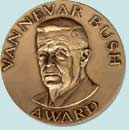 Richard C. Atkinson, the highly respected president of the University of California system since 1995, will receive the 2003 Vannevar Bush Award for lifetime contributions to the nation in science and technology. The National Science Board (NSB) will present Atkinson with the Bush award for his groundbreaking research and long-standing public service at an annual awards dinner May 21 at the Department of State. Atkinson is the 25th recipient of the award since its inception in 1980. Richard C. Atkinson, the highly respected president of the University of California system since 1995, will receive the 2003 Vannevar Bush Award for lifetime contributions to the nation in science and technology. The National Science Board (NSB) will present Atkinson with the Bush award for his groundbreaking research and long-standing public service at an annual awards dinner May 21 at the Department of State. Atkinson is the 25th recipient of the award since its inception in 1980.
Read the full story . ... Posted
5/7/03
|
 |
Scientists to Probe Giant Storm Clusters across Mid-western States
|
 |
| |
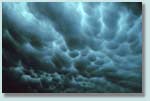 From the air and the ground, scientists this spring and summer will examine some of the world's largest thunderstorm complexes, behemoths that can spread hurricane-force wind and torrential rain for hundreds of miles across the U.S. Midwest. The study, scheduled from May 20 to July 6, should provide the clearest picture to date of how such storms wreak havoc and how forecasters can better predict trails of storm damage. The Bow Echo and MCV Experiment (BAMEX) is organized by scientists Christopher Davis and Morris Weisman at the National Center for Atmospheric Research (NCAR) in Boulder, Colo. MCV stands for mesoscale convective vortex, a low-pressure center associated with large clusters of storms. The $4 million study is funded primarily by the National Science Foundation (NSF). Collaborators include the National Oceanic and Atmospheric Administration (NOAA), the Naval Research Laboratory, and a dozen colleges and universities. From the air and the ground, scientists this spring and summer will examine some of the world's largest thunderstorm complexes, behemoths that can spread hurricane-force wind and torrential rain for hundreds of miles across the U.S. Midwest. The study, scheduled from May 20 to July 6, should provide the clearest picture to date of how such storms wreak havoc and how forecasters can better predict trails of storm damage. The Bow Echo and MCV Experiment (BAMEX) is organized by scientists Christopher Davis and Morris Weisman at the National Center for Atmospheric Research (NCAR) in Boulder, Colo. MCV stands for mesoscale convective vortex, a low-pressure center associated with large clusters of storms. The $4 million study is funded primarily by the National Science Foundation (NSF). Collaborators include the National Oceanic and Atmospheric Administration (NOAA), the Naval Research Laboratory, and a dozen colleges and universities.
Image courtesy: NOAA Photo Library, NOAA Central Library; OAR/ERL/National Severe Storms Laboratory (NSSL)
Read the full story . ... Posted
5/6/03
|
 Top
of Page Top
of Page
|
|
|
 |
 |
 |
 |
 |
 |
 |
 |
|
 |
 |
 |
|
|

